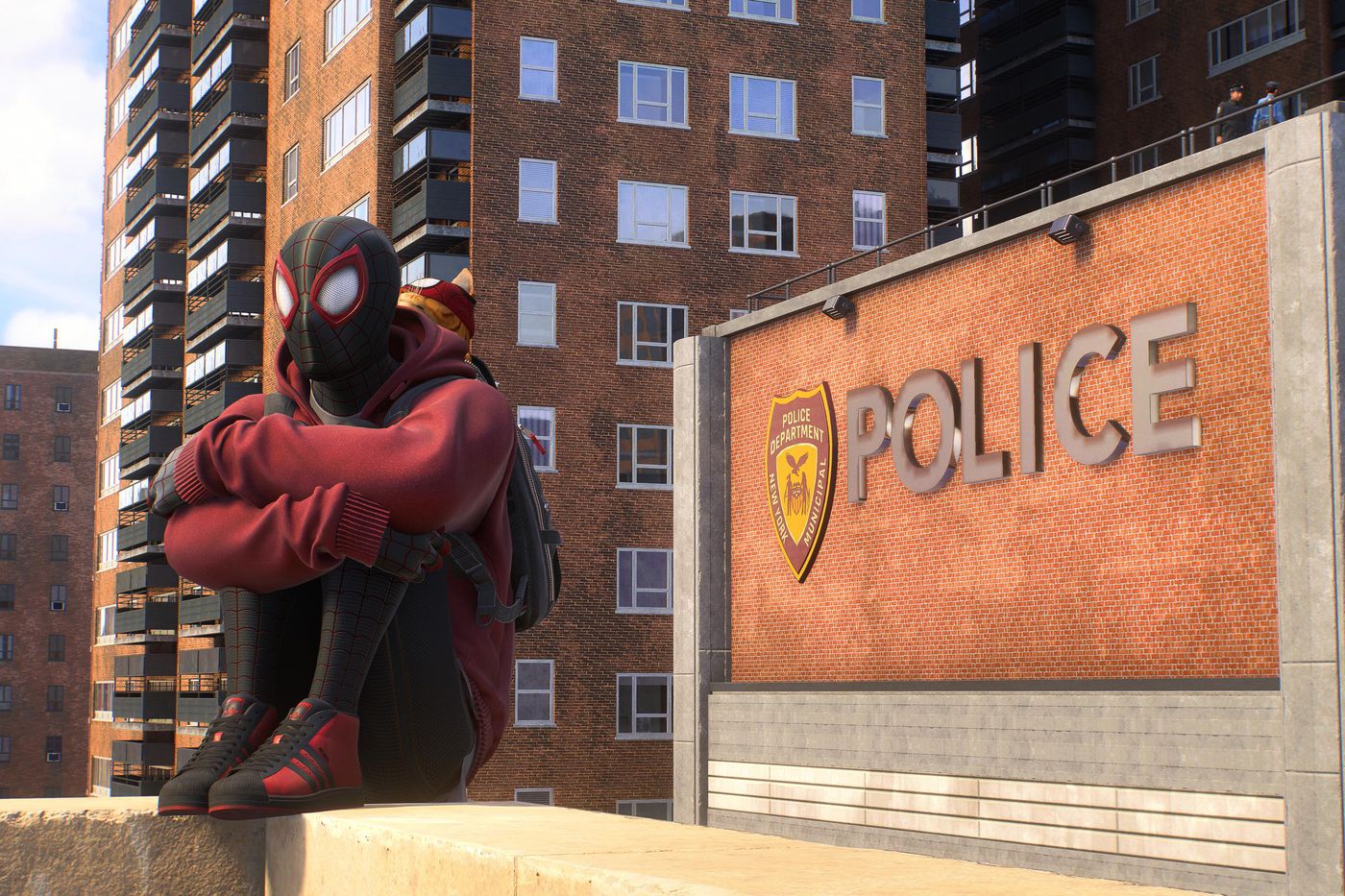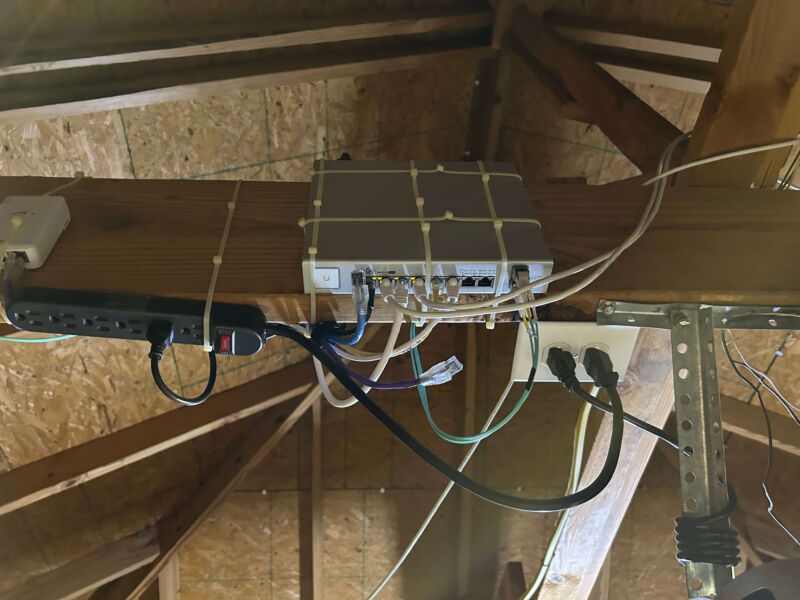in Marvel’s Spider-Man 2, Spidey is a firefighter, city engineer, one-man medical helicopter, open-source GMO chemist, and protector of New York’s precarious bee community. But there’s one thing this Spider-Man isn’t: a cop.
This is a significant career move for Peter Parker, who did not help the police in the original Spider Man as much as him was POLICE.
To unlock the game’s 2018 map, Spidey turned on the NYPD’s surveillance towers. He was the first to arrive at every crime, with real NYPD officers always arriving late—if at all. He jokingly went by “Spider-Cop” and did impressions of tough detectives. I’m not here to judge this creative decision (a lot thoughtful writers they did great work already), but I’m here to celebrate the change in the sequel, which is immediate and poignant.
Image: Insomniac Games/Sony Interactive Entertainment via Polygon
After the game’s opening sequence, in which a kaiju-sized Sandman destroys chunks of NYC, Spider-Man gets down to the most pressing issue: supporting the survivors. He runs down a street covered in dust and smoke, shocking administrative workers and emergency responders tending to the fires and the injured. Then he helps transport a certain familiar face to the nearest hospital. The moment sets the tone: Peter Parker and Miles Morales are now using their gifts to heal communities.
The Spidey pair hang people on their shoulders and deliver them to hospitals. They learn from their neighbors that laws are not inherently helpful and can even punish those who need help. They repeatedly reach out to overlooked members of their community (especially the elderly) and show them the simple kindness of listening. And fighting against the harmful premise of recidivism, they literally spend most of their time protecting reformed supervillains who have served their time and want to return to normal life.
Heck, now Spider-Man’s web seems to have magical cauterizing and healing powers, along with the ability to put out burning buildings.
I especially love what Spidey does for Sandman in the immediate aftermath of the most devastating panic attack in history. Throughout the city, Peter and Miles find fragments of the Sandman – sand decorated with fire gems, you see! — which, MJ tells us over the phone, is helping his human alter ego, Flint Mark, recover in a hospital bed on the other side of town. I won’t spoil the outcome, but it’s telling that halfway through this clutch of otherwise silly side quests that have Spidey fighting little Sandmen, Peter Parker is actively encouraging Mark to rally and reunite with his family.
Image: Insomniac Games/Sony Interactive Entertainment via Polygon
I can’t think of another AAA game so clearly and self-critically in talking to its predecessor and its critics. Earlier this year, Eurogamer spoke with Spider-Man 2 senior creative director Bryan Intihar about the discourse sparked by Spider-Man’s relationship with the police in the first game, which many critics said carried a message for police officers at a time when law enforcement was under intense scrutiny. “You know, that was obviously not our intention,” Intihar said. “I think we’re forward thinking about things.
After playing a large part of the game, I feel that Intihar and the team have done a job, sometimes to a charming degree. A very early mission has Peter Parker talking about why we should ban guns and hug each other instead. He knocks down goons in front of a building marked “City Gun Club”. As Spider-Man restores the rooftop garden lab, he thinks to himself, “I can’t believe EMF is making these GMOs open source. Profit should not be part of the equation when it comes to basic human needs.” Peter Parker asks a fellow superhero if she has any tattoos. “Just the one from Spider-Cop’s tombstone,” he replies.
Image: Insomniac Games/Sony Interactive Entertainment via Polygon
The creators of the game imagined New York as an anti-Gothic city, full of light and love, where criminals are happy to pay absurd apartment rents instead of living behind bars in an asylum.
It balances cheese, honesty, and a genuine belief in goodness that recaptures that moment in Sam Raimi’s film. Spider-Man 2 movie where subway passengers pass a vulnerable, unmasked Peter Parker to safety. Miles Morales solves the puzzle by discovering secret messages in the public art of local BIPOC artists and helps a friend by guiding his favorite pigeons from the crowded piers of Manhattan’s Battery to a tree-filled park in Queens. Rather than working for J. Jonah Jameson, you’re shooting “real New York” for crosstown editor Robbie Robertson, who muses on the beautiful murals, backyard hangouts, and mythological spirit of NYC.
Image: Insomniac Games/Sony Interactive Entertainment via Polygon
This is the Spider-Man I adored as a kid. As a child, I couldn’t imagine, let alone relate to, beating up bullies. But lend a helping hand? I understood that.
I grew up around firefighters and paramedics. My dad was the chief of the city fire department. I’m ashamed to admit that it wasn’t until this month, while working on this game, that I realized why Spider-Man was my superhero: He’s like my father. Selfless. Constantly putting yourself in danger but never talking about it. He, too, struggled to balance work hours with home life, but whenever he was around, he offered a big smile, a listening ear, and unrelenting energy to help with the problem of the day. Even if the problem was just some complicated algebra homework.
Image: Insomniac Games/Sony Interactive Entertainment via Polygon
Image: Insomniac Games/Sony Interactive Entertainment via Polygon
Image: Insomniac Games/Sony Interactive Entertainment via Polygon
Superheroes were created for their moral purity: The good guys defeated the bad guys. But the world is getting more complex, so creating a “good superhero” isn’t as simple as putting a mask on someone and telling them to kick ass. That’s half the job, and one that both Spider-Mans still embody. The game—like virtually every Spider-Man text—still believes that the state should have a monopoly on violence.
But every hero has a second half to their job: what they do after all the ass-kicking. And it is here that superheroes (and first responders) have the opportunity to serve people, not only as a concept of justice.
I’ve always been grateful for my father’s mentorship in life, but now I can look deep into my childhood and see that every time we read Spider-Man together, he was drawn to the text. And he taught me, on a gut level, how to see the best in Spidey.
That’s what I see Spider-Man 2.
View all stories in Marvel
Read more


